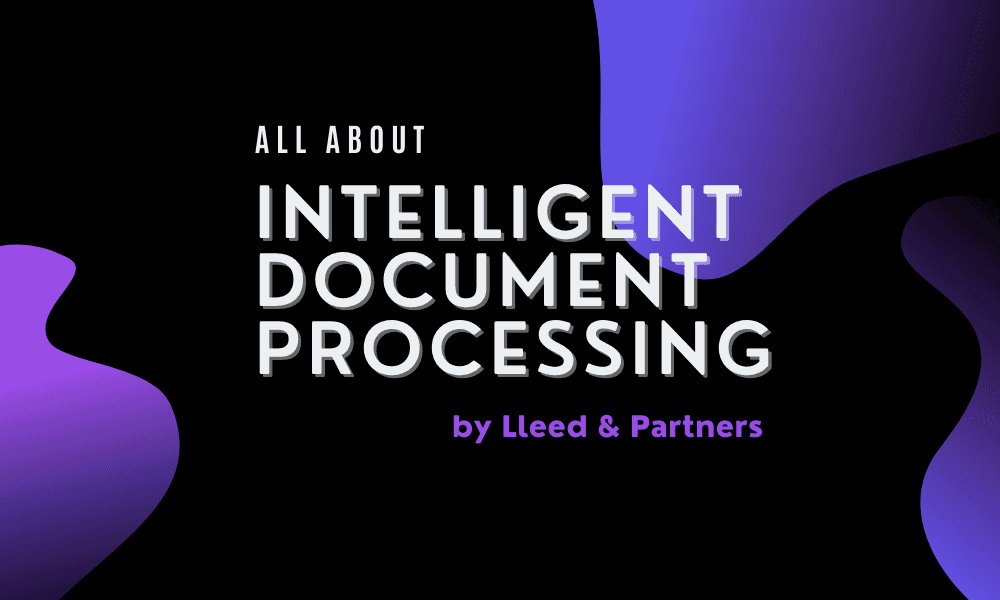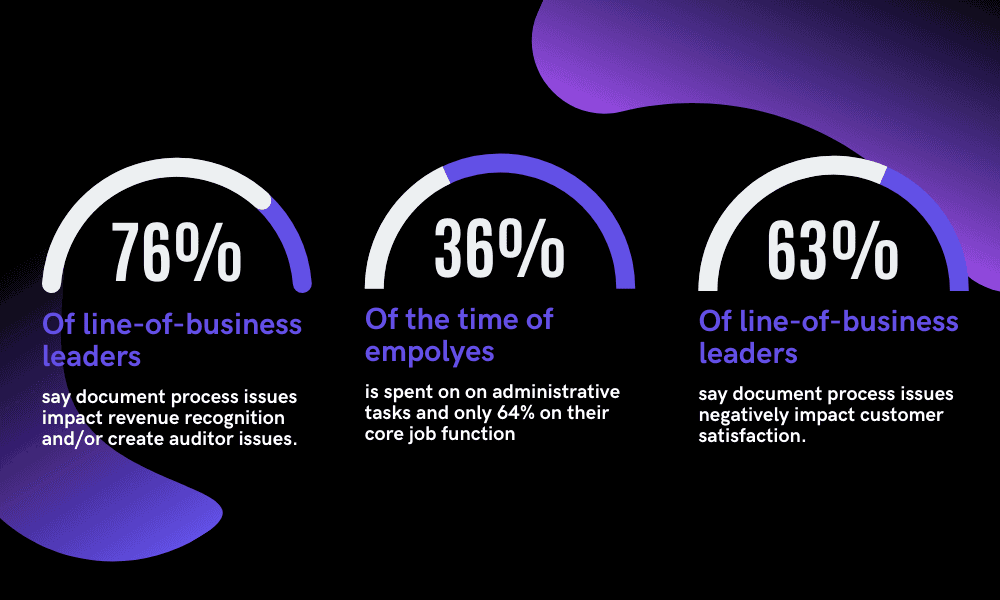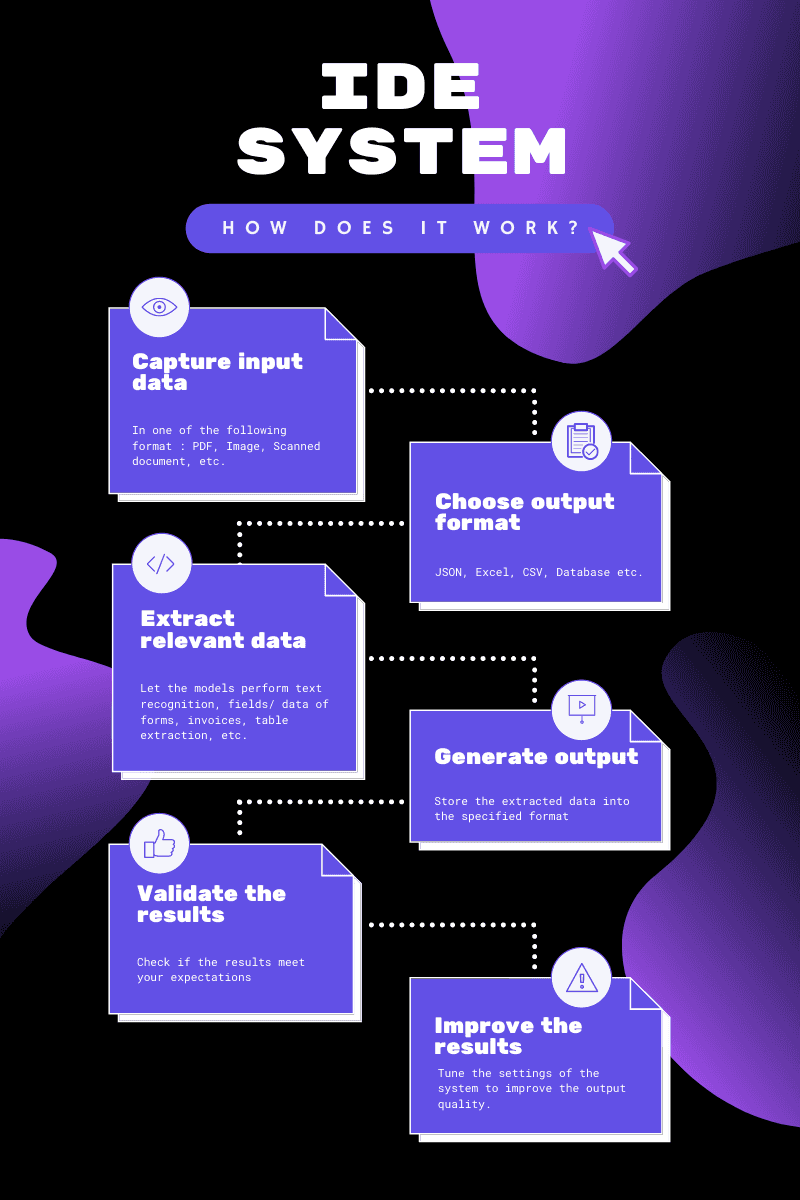
Intelligent Document Processing
A business study on Intelligent Document Processing and its strategical benefits to your workflows
Document processing is inherent to any enterprise workflow. The numerous existing document formats, whether they are physical or digital, allow employees to efficiently share ideas and communicate both inside and outside their working environment. However, this vast and diversified world of commonly used formats (PDF, images, scans) does not always offer the flexibility needed by their users to fulfill their computer daily tasks.
The data is being constrained by the very medium which contains it
These tasks involve manual document classification (file organization, centralization across several computers, etc.), data extraction, excel conversion, document scanning, etc. They are often bottlenecks in the enterprise's productivity. In fact, every interaction with a document increases processing time and is error-prone.
IDC, sponsored by Adobe, has carried out research on the operations of more than 1'500 line-of-business leaders to assess how document processing impacts business processes. Some striking figures can be found below

IDC concludes that disconnected document processes adversely impact revenue, create audit issues, reduce business agility, employee productivity and increase operating costs while having a strong negative impact on customer experience. Nevertheless, recent developments in Artificial Intelligence and Machine Learning provide the necessary tools to address some of these issues.
Towards “Intelligent” Document Processing
Intelligent Document Processing (IDP) aims to provide end-to-end automation to document business processes. IDP is at the junction of Artificial Intelligence (AI), Machine Learning (ML), and Natural Language Processing (NLP). It works best in companies dealing with large volumes of heterogeneous data. However, every company can benefit from IDE to speed up its processes, reduce the number of errors and dependency on human intervention.
Intelligent Document Processing is an integral part of Digital Transformation
A key step to grasp how IDP works is to distinguish between different structures of documents. The categories below are ordered by increasing amount of time required to extract information from documents.
Structured documents : the content of these documents is well-organized. They share a common digital structure, such as an Excel spreadsheet. Computer systems can directly benefit from it to extract/query information and even automatically store them into a database. JSON is also a widely-used structured format in web-systems to store data.
Semi-structured documents : we are referring to order forms, invoices or, more generally, any document generated from a template, but not bound to specific data fields.
Unstructured documents : if you can freely choose the design/template of a document, you are most likely dealing with an unstructured document. Examples are contracts, articles or letters.
The goal of any IDP system is to convert any document (invoice, form, report, scans, etc.) into the first category, aka a structured document.

Time for an example
The following picture illustrates how an invoice can be transformed in a tabular file such as excel. In the output format, the invoice can easily be sent to an invoice database, without the need of any human intervention. That's the power of IDP.

If you want to dive into the technical implementation details, please check our technical insight on document tagging and classification, which presents an open-source framework to perform IDP tasks in Python.
References
The Ultimate Guide to Document Automation 2021
Intelligent Document Processing with AI
Why AI Is the Next Step in Document Processing ?
Business Impact of Intelligent Document Processing
Can AI Help Overcome Document Bottlenecks
Related services
Artificial Intelligence and Machine Learning
Artificial Intelligence and Machine Learning allow you to facilitate complex and scalable tasks so that you can focus on higher value-added tasks.UI/UX Design
User experience is the most important success criteria for modern products. Discover how we can help you by using thorough techniques to reduce friction and improve satisfaction.Data & Analytics
We support you in data collection and analysis. Our experts, advice you in designing data-driven decision making strategies and optimizing your processes.Get in touch
Lleed & Partners experts are here to help you in the digitalisation process, from strategy to implementation. Let's discuss your current needs, and how we can help you achieve your goals.
Contact usRelated insights

Structuring data using artificial intelligence
Unstructured data such as chats or email contains valuable information that can be used to improve business processes. We explain how to structure this data using latest AI technologies.
